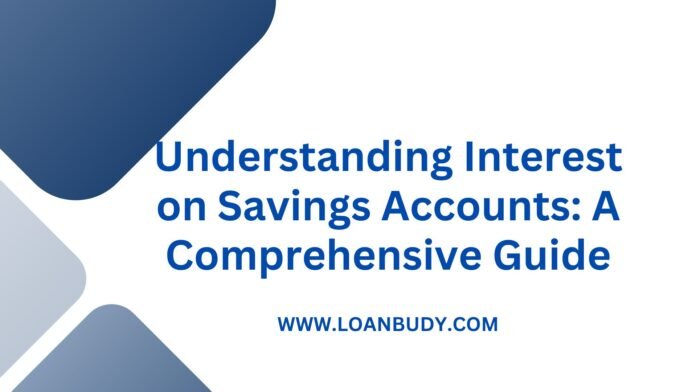When it comes to managing your finances, a Savings Accounts is one of the simplest and most effective tools at your disposal. Not only does it keep your money safe, but it also allows you to earn interest over time. In this article, we’ll break down how interest works on a savings account, helping you make informed decisions about where to put your hard-earned money.
What Is Interest?
At its core, interest is the cost of borrowing money or the reward for saving it. When you deposit money into a savings account, the bank pays you interest as a way to encourage you to keep your funds there. This is essentially a small thank-you for letting the bank use your money for lending and other purposes.
Types of Interest
- Simple Interest: This is calculated only on the principal amount (the initial deposit). For example, if you deposit $1,000 at an interest rate of 2% per year, you’ll earn $20 in interest after one year.
- Compound Interest: This is where things get interesting. Compound interest is calculated on the principal as well as on the accumulated interest from previous periods. This means that over time, your interest can earn interest. If you deposit $1,000 at a 2% annual interest rate compounded monthly, your balance will grow faster than with simple interest.
How Is Interest Calculated?
Most banks use a formula to calculate interest on savings accounts. The formula for compound interest is:
A=P(1+rn)ntA = P(1 + \frac{r}{n})^{nt}A=P(1+nr)nt
Where:
- AAA = the amount of money accumulated after n years, including interest.
- PPP = the principal amount (initial deposit).
- rrr = annual interest rate (decimal).
- nnn = number of times interest is compounded per year.
- ttt = the number of years the money is invested or borrowed.
Example:
If you deposit $1,000 at a 2% interest rate, compounded monthly for 5 years, the calculation would look like this:
- P=1000P = 1000P=1000
- r=0.02r = 0.02r=0.02
- n=12n = 12n=12
- t=5t = 5t=5
Plugging these values into the formula, you’d find:
A=1000(1+0.0212)12×5A = 1000(1 + \frac{0.02}{12})^{12 \times 5}A=1000(1+120.02)12×5
After performing the calculation, you’ll see how your initial deposit grows over time.
Why Is Compounding Important?
The magic of compounding lies in its ability to accelerate your savings. The more frequently interest is compounded, the more you earn. For instance, if a bank compounds interest daily rather than annually, your savings will grow more significantly.
Factors Affecting Interest Rates
Several factors can influence the interest rate you receive on your savings account:
- Economic Conditions: Central banks set benchmark interest rates, which affect how much banks pay their customers.
- Bank Policies: Different banks offer different rates to attract customers. It’s always a good idea to shop around for the best rate.
- Account Type: Some accounts, like high-yield savings accounts or certificates of deposit (CDs), often offer higher interest rates compared to regular savings accounts.
Tips for Maximizing Your Savings Interest
- Shop Around: Don’t settle for the first bank you find. Compare interest rates and terms.
- Consider Online Banks: Online banks often offer higher interest rates due to lower overhead costs.
- Stay Informed: Keep an eye on interest rate trends to ensure you’re always getting the best deal.
- Regular Deposits: Make regular contributions to your savings account to take advantage of compound interest.
- Avoid Withdrawals: Frequent withdrawals can reduce the amount of money earning interest, slowing down your growth.
Conclusion
Understanding how interest works on a savings account is crucial for maximizing your savings potential. By taking advantage of compound interest and making informed choices, you can watch your money grow over time. Start saving today, and let your money work for you!
Read More:
- Best High-Yield Savings Accounts for August 2024: Up to 5.50%
- Understanding Bid and Ask Size on a Stock Quote
- Multiple Listing Service (MLS): Definition, Benefits, and Fees












